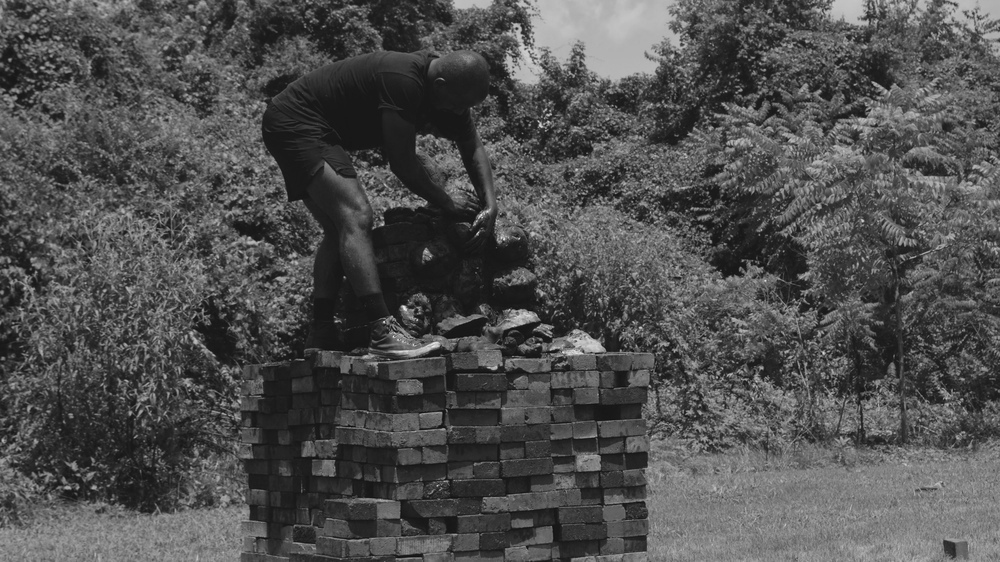
THE IMPOSSIBILITY
first performed on July 27, 2020
Ancarrow's Landing
performed once in 2020
LUIS VASQUEZ LA ROCHE
LaRissa Rogers, John Chae, Bryan Castro.
Trinidad & Tobago / Richmond, Virginia
777219103l777219103u777219103i777219103s777219103@777219103l777219103u777219103i777219103s777219103v777219103a777219103s777219103q777219103u777219103e777219103z777219103l777219103a777219103r777219103o777219103c777219103h777219103e777219103.777219103c777219103o777219103m
www.luisvasquezlaroche.com/
THE IMPOSSIBILITY
LUIS VASQUEZ LA ROCHE
I have used palm oil in several works. Palm oil, combined with gunpowder and lemon juice, was poured over slaves to cover bruises and marks before they were sold. There is an interesting layering that happens here with palm oil as a commodity but also the enslaved as a commodity. Previously, in a performance, I covered my body with palm oil. The obvious next step was to create casts in an attempt to merge these two. While walking in Richmond, Virginia, I started picking up bricks to use as a base to place my casts. Part of my research led me to the history of the brick in the US, where slaves would harvest clay from the James River to make bricks. Based on the research, I decided to create a monument, where the casts would lay on top of one another to impart the sense of a pile of bodies. Eventually, these palm oil body casts melt and disappear. The large cube/base made of 1,400 bricks is the only thing that would remain, giving the sense of a removed monument.
The following weeks after the performance, I proceeded to go back to the site of the performance to collect bricks. I would collect ten to fifteen bricks at a time to place them back to the locations that I took them from. Due to the palm oil and gunpowder mixture that melted on them, the bricks would be stained. I consider these stained bricks that are embedded on the sidewalks of the city of Richmond as small invisible memorials. The markers in the map above are a few locations where bricks were placed back.
Invisible labor is a constant occurrence in my practice, and the documentation lacks to show all the pre- and post-labor by BIPOC folks. It is important to point out that it took many folks to move over 1,400 bricks and 6 tons of palm oil casts on several occasions. I am aware of these invisible acts. How do we make labor visible and how do we compensate it? The realization of this project was not possible without the help of the community around me. Mena Sehay, Mahari Chabwera, Ciyani Smith, LaRissa Rogers, Kelley-Ann Lindo, John Chae, and Bryan Castro are only a few folks who helped me with casts, collecting bricks, and the performance.